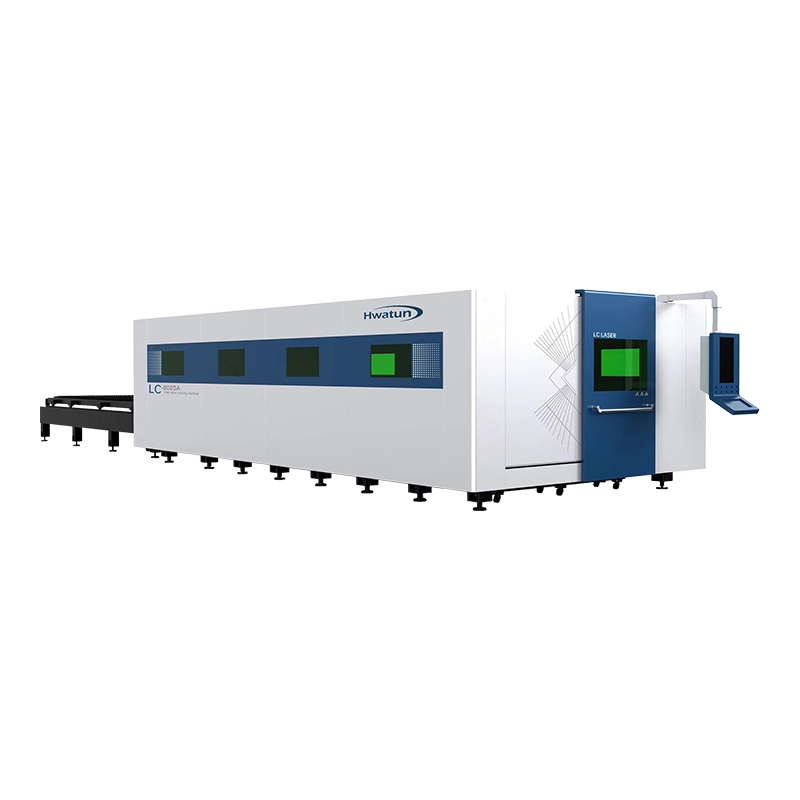Web Menu
Product Search
Exit Menu
What materials can be cut with a CNC Laser Cutting Machine?
CNC laser cutting machines have transformed the way materials are shaped, designed, and processed in modern manufacturing. With their high precision, speed, and flexibility, these machines can cut a wide range of materials for various industries such as automotive, aerospace, signage, construction, fashion, and more. But what exactly can you cut with a CNC laser cutting machine? Let’s explore the types of materials suitable for this powerful technology.
1. Metals
Laser cutting is especially popular for metal processing. Highpowered fiber or CO₂ lasers can precisely cut various types of metal, making it ideal for industrial and commercial applications.
Common Metals Cut by Laser:
Steel (Carbon Steel & Stainless Steel): Laser cutters can handle thick and thin steel sheets, creating clean edges without distortion. Stainless steel is often used for durable components and architectural details.
Aluminum: Though reflective, aluminum can still be cut with specialized fiber lasers. It’s often used in aerospace and automotive industries.
Brass and Copper: These are more difficult due to their high reflectivity and thermal conductivity, but modern highpower lasers can still cut them effectively with proper settings.
Titanium: Used in aerospace and medical industries, titanium can be laser cut with high precision for small, complex parts.
Laser cutting of metal offers advantages like minimal warping, reduced mechanical wear, and the ability to create intricate patterns quickly.
2. Wood and WoodBased Materials
Wood is a popular choice for laser cutting, especially in decorative, craft, furniture, and packaging applications. CO₂ lasers are most commonly used for wood processing.
Types of Wood That Can Be Cut:
Plywood and MDF (MediumDensity Fiberboard): Often used in furniture and signage due to affordability and consistent quality.
Solid Wood (Maple, Birch, Oak, etc.): Depending on the thickness, solid wood can be laser cut for customized furniture pieces or decorative items.
Veneers and Balsa Wood: Thin wood sheets are ideal for precise laser cutting and engraving in modelmaking and craftwork.
Laser cutting wood allows for highdetail designs with smooth edges and minimal finishing work.
3. Acrylic and Plastics
Acrylic is one of the most popular materials used with laser cutters due to its clean melting behavior, which results in polished edges directly after cutting.
Examples of Cuttable Plastics:
Acrylic (PMMA): Available in many colors and transparencies, perfect for signage, awards, and display stands.
PETG and Polycarbonate: These can be laser cut, although polycarbonate may char or discolor.
Delrin (Acetal): Used for mechanical parts, gears, and prototypes.
Mylar and Styrene: Thin plastic films and sheets that are easy to laser cut for packaging or electronics.
Important Note: Not all plastics are safe to laser cut. PVC and ABS, for example, release harmful gases when cut and should be avoided without proper ventilation systems.
4. Fabrics and Textiles
Laser cutting is widely used in fashion, upholstery, and technical textile industries. It allows intricate designs and seamless patterns without fraying.
Suitable Fabrics:
Cotton, Polyester, and Nylon
Felt and Fleece
Leather and Faux Leather
Silk and Lace
Laser cutting fabrics provides precision and eliminates the need for manual cutting or sewing templates, making it ideal for mass production and customization.
5. Paper and Cardboard
Laser cutters are also excellent for paperbased materials, making them perfect for packaging, invitations, artwork, and modelmaking.
Materials Include:
Cardstock and Paperboard
Corrugated Cardboard
Kraft Paper and Specialty Papers
Because laser cutters can cut paper without contact, there’s no risk of tearing or fraying, even with intricate lacelike designs.
6. Rubber and Foam
Certain types of rubber and foam can be cut with lasers, especially for making gaskets, seals, and protective packaging.
Examples:
Neoprene and Silicone Rubber
EVA Foam and Polyurethane Foam
Closedcell Foams for Packaging
It’s crucial to use lasersafe types of rubber and foam, as some materials may emit harmful gases when burned.
7. Glass and Ceramics (Engraving Only)
While CNC laser machines cannot cut glass or ceramic materials in the traditional sense due to their brittleness, they can engrave or etch them effectively.
Examples:
Tempered and Untempered Glass
Ceramic Tiles and Porcelain
Glassware and Mirrors
Laser engraving on glass is commonly used for personalized gifts, awards, and decorative items.
CNC laser cutting machines are incredibly versatile tools capable of working with a vast range of materials, including metals, woods, plastics, fabrics, paper, and even some types of rubber and foam. They are widely used in everything from heavy industrial manufacturing to delicate craft design.
However, not every material is suitable. Some materials—like PVC, ABS, and certain coated metals—can release dangerous fumes or damage the machine. Always verify material compatibility and safety before laser cutting.

News categories
Product categories
Related Products
 +86-159 5138 1316
+86-159 5138 1316 +86 180 6819 3096
+86 180 6819 3096 [email protected]
[email protected] Group 4, Xinba Village, Binhai New Area (jiaoxie Town), Laoba Port, Nantong City, Jiangsu, China.
Group 4, Xinba Village, Binhai New Area (jiaoxie Town), Laoba Port, Nantong City, Jiangsu, China.
Copyright © Nantong Hwatun Heavy Machine Tool Co., Ltd. All Rights Reserved.

 Eng
Eng  简体中文
简体中文 Español
Español русский
русский







